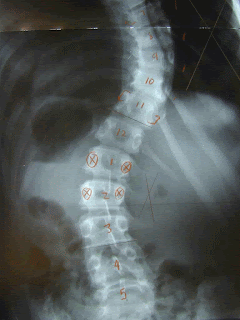
The exhibition includes hundreds of works in photography, film, video, and installation in which artists use documentary practices to try to "touch 'the real'," as Lind explains in the exhibition guide.
I was especially moved by
Yael Bartana's installation
Summer Camp, in which she depicts Israeli, Palestinian, and international volunteers rebuilding destroyed Palestinian houses in the occupied territories - juxtaposed with a soundtrack drawn from Zionist propaganda films of the 1930s and 40s. The main video is projected right onto the bare plywood walls of the installation, which emit a smell that puts you in the space of the new houses. In one corner a Zionist film plays on a small monitor. I think the installation is a nice execution of a strong concept.
I also enjoyed several pieces that artistically recreate documents from important events. In
My Neck is Thinner than a Hair:
Engines, Walid Raad/Atlas Group impeccably cropped, printed, framed, and labeled 100 photographs of car engines blasted into neighborhoods in Lebanon by car bombs between 1975 and 1991. As in Raad's other work, the boundaries between fact and fiction are blurred as the provenance and authenticity of some of the photographs are in question.
Nathan Coley's
Lockerbie Witness Box and
Lockerbie Evidence recreate evidence from the trial of the two Libyans accused of bombing Pan Am flight 103. For
Inbox, Palestinian artist
Emily Jacir meticulously handpainted dozens of personal, political, and spam emails she sent and received over the course of five years.
I was somewhat inexplicably entranced by
Mark Raidpere's video installation
10 Men, which projects an 8-minute loop of 10 inmates in an Estonian prison simply posing for the camera one by one in front of a blue wall, to an accompanying music box melody. My colleagues and I had a lively discussion about whether this piece abused or exploited its subjects - and whether the piece would have been as captivating had they not been prison inmates.
The works and our conversations made it clear that the exhibition takes very much an art-world perspective on the documentary form. The show limits itself to presenting the use of documentary practices by artists - as defined by curators of museums, art shows, and galleries. There were thousands of works to consider in this category, and it makes for a rich show. But coming from the documentary film tradition myself, I felt the absence of reference to the 150-plus years of photography, film, and video using these practices. It was as if the artists in the show had "discovered" the use of observation, interviews, archival material, recreations, and sound juxtapositions; yet documentary artists have been using, and subverting, these forms for a long time.
I realize that the breadth of documentary history was beyond the scope of this exhibit, also because the show focused on contemporary artists. It's just interesting to feel the palpable division between the art world and the film/video world - despite the fact that many filmmakers consider themselves artists, and many artists make films.
In any case, the show was really interesting and we all learned a lot. Plus, we had a delicious dinner afterwards at
Terrapin Restaurant in nearby Rhinebeck.







